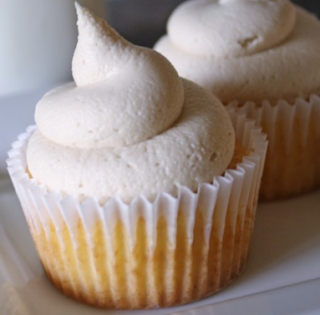Bring a dessert to life with a simple technique from Karen
Tack and Alan Richardson! In the book What’s
New, Cupcake? Both of the authors implement a series of simple, plain, and
unique alterations to cupcakes. With this dessert, I can emulate a finished
piece, one that is creative and very easy.
These are the ingredients that I used:
1 can (16 ounces) chocolate frosting
2 containers (8 ounces each) frozen whipped topping, thawed
in refrigerator
24 1 ½ - inch balls of ice cream (any flavor)
Multicolored candy-coated chocolate-covered sunflower seeds
or chocolates
(Tack and Richardson 157).
I began this dish by prepping the cupcakes. I mixed the
batter in with 3 eggs, a cup of water, and half a cup of oil. Then, after a few
minutes of mixing, I placed it in the oven set to 325 degrees. After a set
amount of time has passed, I had the cupcakes fresh and ready.
I began to approach the dish by carving out a spherical shape
from the cupcake, not too far from the edges. Tack and Richardson suggested to
sprinkle grounded cookies on top of the cupcake, but I decided to take a
different route. I excluded that step, and, instead, I went on to filling the
hollow portion of the cupcake with a small scoop of ice cream.
At this point, there were only a few more steps to put the
final piece of the ghost together. I then coated the cupcake in a swirl-like
fashion. As Tack and Richardson suggested, “Pipe a circle of the whipped
topping around the base of the cone cake. Pipe a smaller circle on top of the
ice cream and the whipped topping to cover the cake, then pipe a third layer of
whipped topping, using a squeeze-release-pull motion” (157). This overall
created a ghostly effect; the stacked swirls represent an animated outlook of
how ghosts are shaped. At the end of this method, I peaked at the very uppermost
portion to signify a ghost-like head.
I finished off the dessert by placing two sunflower seeds just
below the very top of the frosted twirls to depict eyes. The finished piece was
generally very simplistic, yet incorporates different flavors to achieve a
desired effect both flavorfully and creatively. Through making this dish, I’m
curious as to how else you can transform dishes like these. How do you bring
your desserts to life?
Tack, Karen and Alan Richardson. What’s New, Cupcake? New York, New York. Houghton Mifflin Harcourt Boston 2010


No comments:
Post a Comment